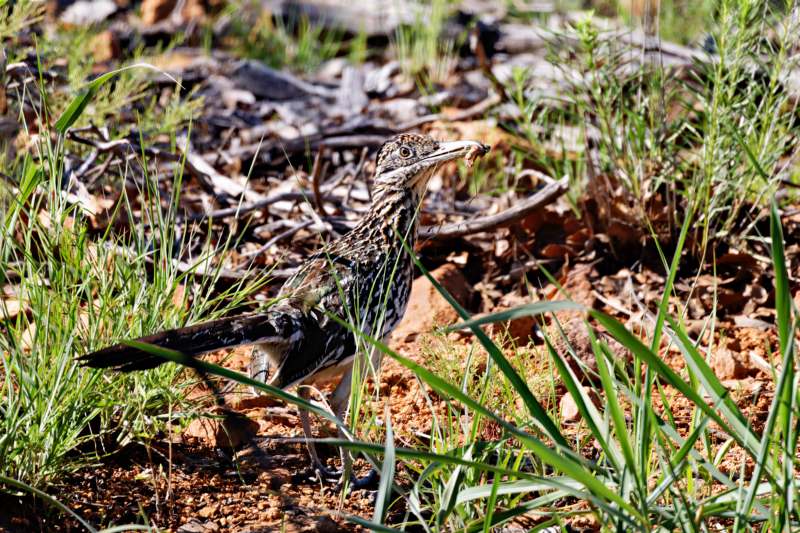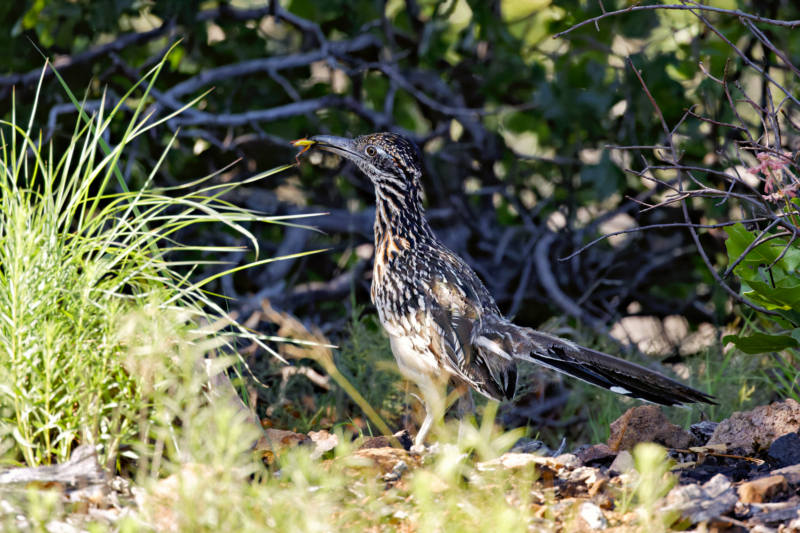While driving the scenic roads of the Wichita Mountains Wildlife Refuge in Oklahoma, on the lookout for some wildlife photography opportunities, I was treated to an unexpected and exciting sight. A Greater Roadrunner, with its unmistakable long tail and prominent crest, darted across the road right in front of my truck. But it wasn’t just the bird itself that caught my eye; it was clearly carrying something in its beak.
Thrilled by this chance encounter, I pulled over where I’d last seen the roadrunner disappear into the brush. Luckily, after a moment of scanning, I spotted it again before it vanished completely. With a quick burst of excitement, I managed to take a few photos, and that’s when I confirmed my initial suspicion: the roadrunner was enjoying a grasshopper lunch!

This exciting encounter sparked my curiosity about these fascinating birds, and after some research, I discovered that Greater Roadrunners (Geococcyx californianus) are truly remarkable creatures with several interesting adaptations that make them perfectly suited for life in Oklahoma.
Firstly, unlike their cartoon counterpart who perpetually outsmarts Wile E. Coyote, Greater Roadrunners are actually ground-dwelling birds. They excel at running, reaching speeds of up to 25 miles per hour! While they’re not marathon runners, this impressive burst of speed allows them to chase down prey in the open habitats they prefer, like grasslands, brush, and even deserts. Interestingly, despite their preference for staying on the ground, they can fly short distances to perch on branches or rocks for a better vantage point.
Speaking of prey, Greater Roadrunners are opportunistic eaters. Their diet is quite varied, consisting of insects (like the grasshopper I saw!), rodents, reptiles, small mammals, and even other birds. They’re even known to be brave enough to take on rattlesnakes, pecking them repeatedly on the head to subdue them. In winter months, when prey might be scarce, they’ll switch to a more plant-based diet, consuming fruits and seeds.
If you’re ever fortunate enough to spot a Greater Roadrunner, listen carefully. They communicate with a series of distinctive “coo” sounds. Males, in particular, have an elaborate courtship display to impress females. This includes offering food gifts and making whirring or cooing sounds while energetically wagging their tails.
The good news is that Greater Roadrunners are a conservation success story, with a stable global population estimated at 1.4 million. However, they still face threats like habitat loss and illegal shooting, particularly in Southern California where their numbers have declined significantly.

Overall, my encounter with the Greater Roadrunner at the Wichita Mountains Wildlife Refuge was a memorable one. These unique and adaptable birds are a true testament to the wonders of the natural world, and their presence in Oklahoma adds another layer of fascinating biodiversity to this beautiful state.
